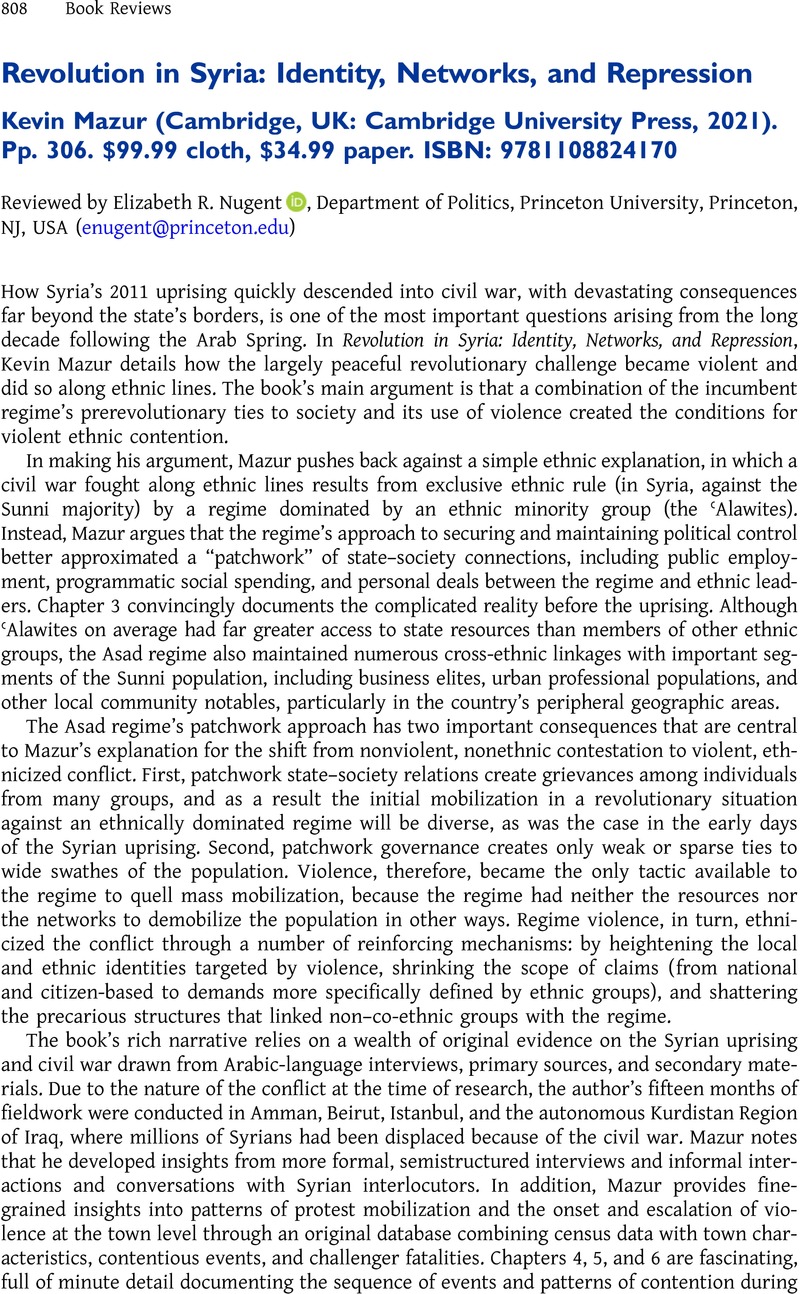No CrossRef data available.
Article contents
Revolution in Syria: Identity, Networks, and Repression Kevin Mazur (Cambridge, UK: Cambridge University Press, 2021). Pp. 306. $99.99 cloth, $34.99 paper. ISBN: 9781108824170
Review products
Revolution in Syria: Identity, Networks, and Repression Kevin Mazur (Cambridge, UK: Cambridge University Press, 2021). Pp. 306. $99.99 cloth, $34.99 paper. ISBN: 9781108824170
Published online by Cambridge University Press: 12 October 2023
Abstract
An abstract is not available for this content so a preview has been provided. Please use the Get access link above for information on how to access this content.

- Type
- Book Review
- Information
- Copyright
- Copyright © The Author(s), 2023. Published by Cambridge University Press
References
1 Beissinger, Mark R., Jamal, Amaney A., and Mazur, Kevin, “Explaining Divergent Revolutionary Coalitions: Regime Strategies and the Structuring of Participation in the Tunisian and Egyptian Revolutions,” Comparative Politics 48, no. 1 (2015), 1–21CrossRefGoogle Scholar.



